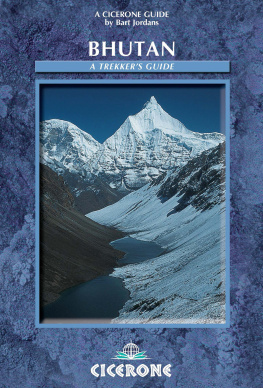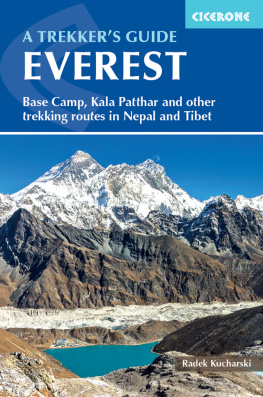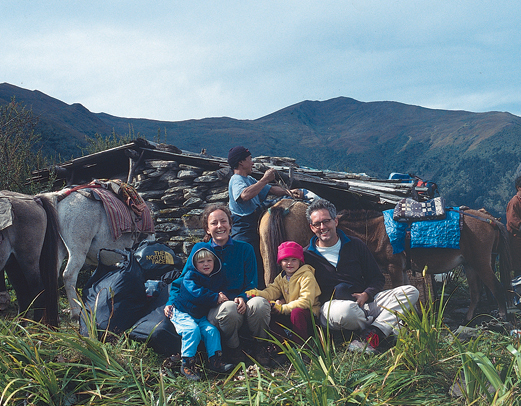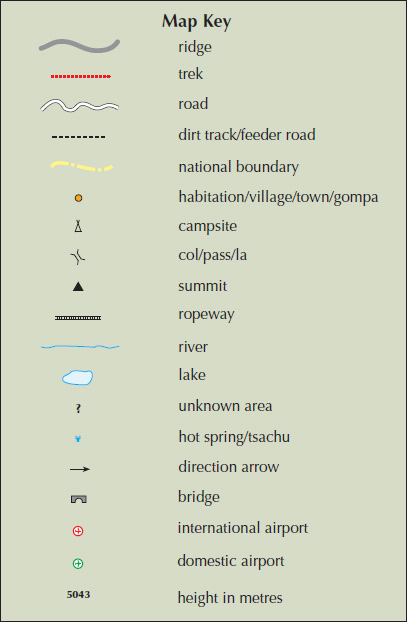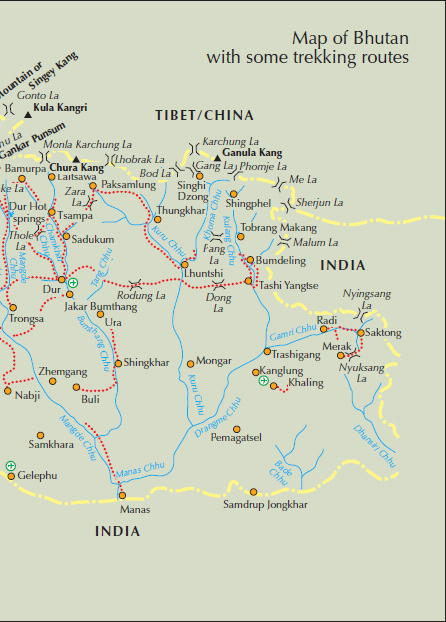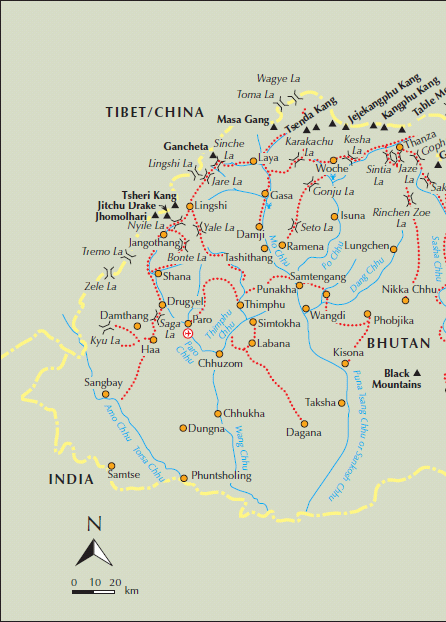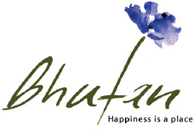About the Author
The author on the Dagala Trek with his family
Bart Jordans has been guiding and exploring treks and (trekking) peaks in the Himalayas, Karakorams, Hindu Kush, European Alps and Kilimanjaro since 1984. He has led treks in Bhutan since 1994, and grasped the opportunity of getting to know the Bhutan Himalayas in greater depth when he lived in the country with his wife and two small children for more than four years from 1999. His familiarity with all aspects of the overwhelming beauty of the Bhutan Himalayas and its people has encouraged him to write a trekking guidebook to share his great love for this part of the eastern Himalayas.
BHUTAN
A TREKKERS GUIDE
by
Bart Jordans
2 POLICE SQUARE, MILNTHORPE, CUMBRIA LA7 7PY
www.cicerone.co.uk
Bart Jordans 2005, 2008
Second edition 2008, reprinted 2012 with updates
ISBN 978 1 85284 553 7
First edition 2005
ISBN-13: 978 1 85284 398 4
ISBN-10: 85284 398 5
A catalogue record for this book is available from the British Library.
Printed by KHL Printing, Singapore
Photographs by Bart Jordans unless stated. Flower sketches on pages 34 to 36 by Dr AK Hellum. Illustrations on page 42 from Birds of Bhutan , used with permission.
To the friendly, colourful and magical people of Bhutan and Helene, Laura and Max with love
Warning
All mountain activities contain an element of danger, with a risk of personal injury or death. Treks described in this guidebook are no exception. Under normal conditions wandering the trails of Bhutan will be neither more nor less hazardous than walking among big mountains anywhere in the world, but trekking involves physically demanding exercise in a challenging landscape, where caution is advised and a degree of stamina is often required, and it should be undertaken only by those with a full understanding of the risks, and with the training and experience to evaluate them. Trekkers should be properly equipped for the routes undertaken. While every care and effort has been taken in the preparation of this guide, the user should be aware that conditions can be highly variable and change quickly. Rockfall, landslip and crumbling paths can alter the character of a route, and the presence of snow and the possibility of avalanche must be carefully considered, for these can materially affect the seriousness of a trek.
Therefore, except for any liability which cannot be excluded by law, neither Cicerone Press nor the author accepts liability for damage of any nature (including damage to property, personal injury or death) arising directly or indirectly from the information in this guide.
Readers are warned that trekkers are sometimes badly injured by passing yaks; a few unfortunates die of hypothermia or acute mountain sickness; while some simply lose their balance and fall from the trail due to a momentary loss of concentration. Since there is no organised mountain rescue service in Bhutan, such as exists in some mountain regions of Europe and the USA, if an accident occurs self-help may be your only option.
Front cover: Tsho Phu lakes and Jitchu Drake (6850m), seen on Trek 4, day 6
CONTENTS
PREFACE TO THE FIRST EDITION
A trekking destination beyond imagination
The Kingdom of Bhutan is a landlocked country comprised of mountains and forest and offering all the beauties of the Himalayas. The Bhutanese people have travelled through their country on foot for centuries, developing many routes through valleys and over passes. Over time these routes witnessed many different faces from many different places, each with their own story to tell. The majority are still in use; however, the building of roads to access more and more remote places in the Kingdom has caused the disappearance of several routes (only a few decades ago there were no roads in Bhutan).
Having had the unique opportunity of living in Bhutan for more than four years (19992003), and leading treks there since 1994, I felt that it was time to write a trekking guidebook for Bhutan. When we approached Paro airport in 1999 my daughter Laura (then 2 years old) looked out of her window and said, Look, papas mountains. This book is intended to share my love and respect for the Bhutan Himalayas and its hospitable people.
The information given is as accurate as possible, but with many different and sometimes hard to access sources, details are always changing. Deriving details from local people, reading different maps, studying various (old) sources didnt make the process easier, but it was very interesting. Accuracy is important in a guidebook, but as more information comes in I am sure that changes will need to be made, names re-spelled, and so on. I always welcome comments and updated information from readers.
This guidebook unfolds many routes throughout the Kingdom in detail. Some routes have been described earlier in other sources (such as in accounts from explorers); some routes are described here for the first time, with perhaps a lesser degree of detailed information. Every trek description starts and finishes where transport is left behind or met.
The book should inspire the reader to visit places away from the more popular routes, and opens up some remote valleys. Travel around with respect so as not to spoil the environment for either the people living there or for future visitors. Many valleys have hardly been visited by foreigners and are pretty well unmapped. You may feel that writing a guidebook might give the adventurer too much information, but dont worry: there is plenty left! I collected material for more than 65 treks and probably many more routes exist throughout this mountainous country.
One of my favourite treks, the Ramena trail leading to Lunana, couldnt make this edition. I have to apologise to everybody who contributed text and cant find it here, especially seven-year-old Beth Dutson. Be assured that your contributions will be handed out as background information to trekkers joining me a special treat.
Bhutan has been closed to outsiders until recently, with a few exceptions; the first Preface to the first edition A trekking destination beyond imagination paying tourist group visited the country in 1974. Trekking started in western Bhutan in 1978, and in central Bhutan in 1982, and the trekkers make up only 10 per cent of total tourist numbers (just over 7500 tourists in 2000). The Bhutanese believed for a long time that a thunder dragon protected the country and its people from any trespassers or evil spirits. The independence Bhutan has known for so long is highly treasured. For generations past the country has isolated herself from the outside world in her attempt to preserve successfully her civilisation. Only a few foreigners visited the country.
Next page
